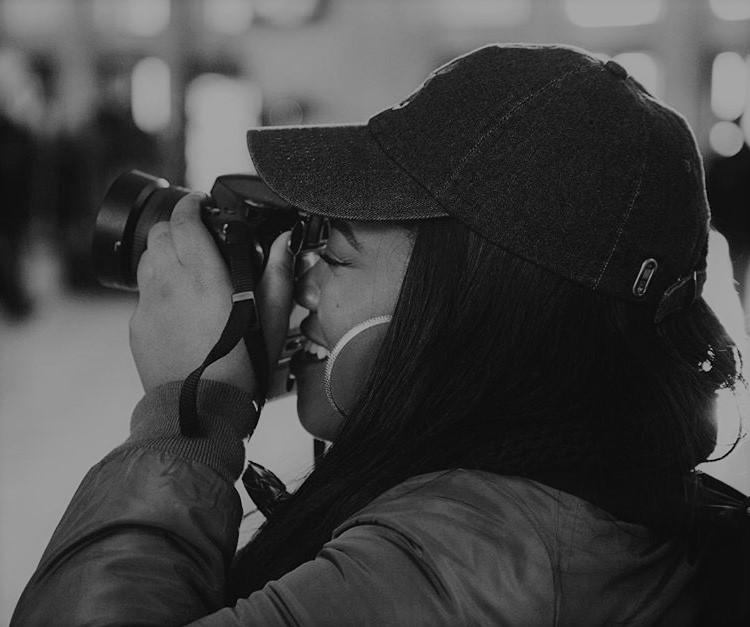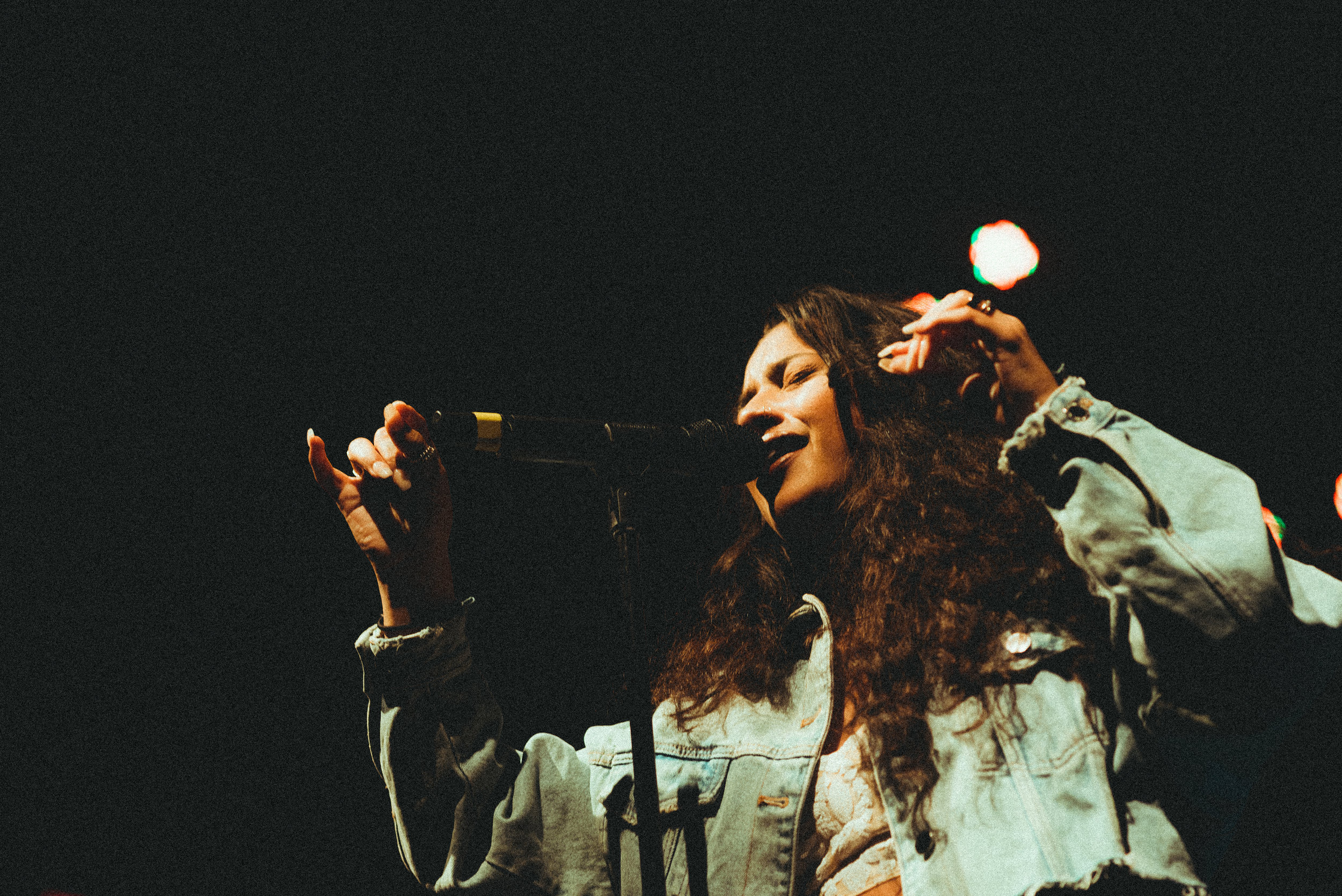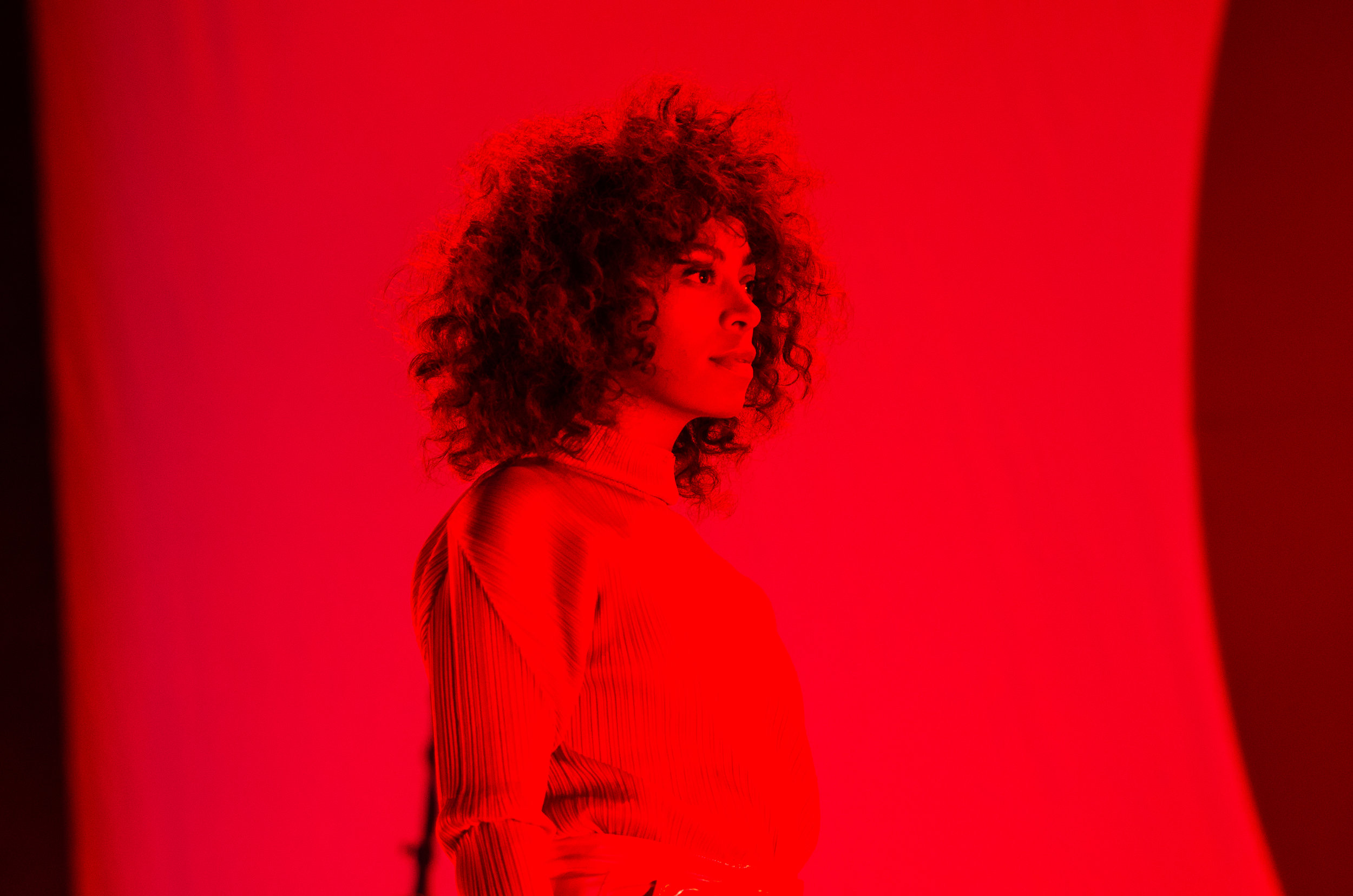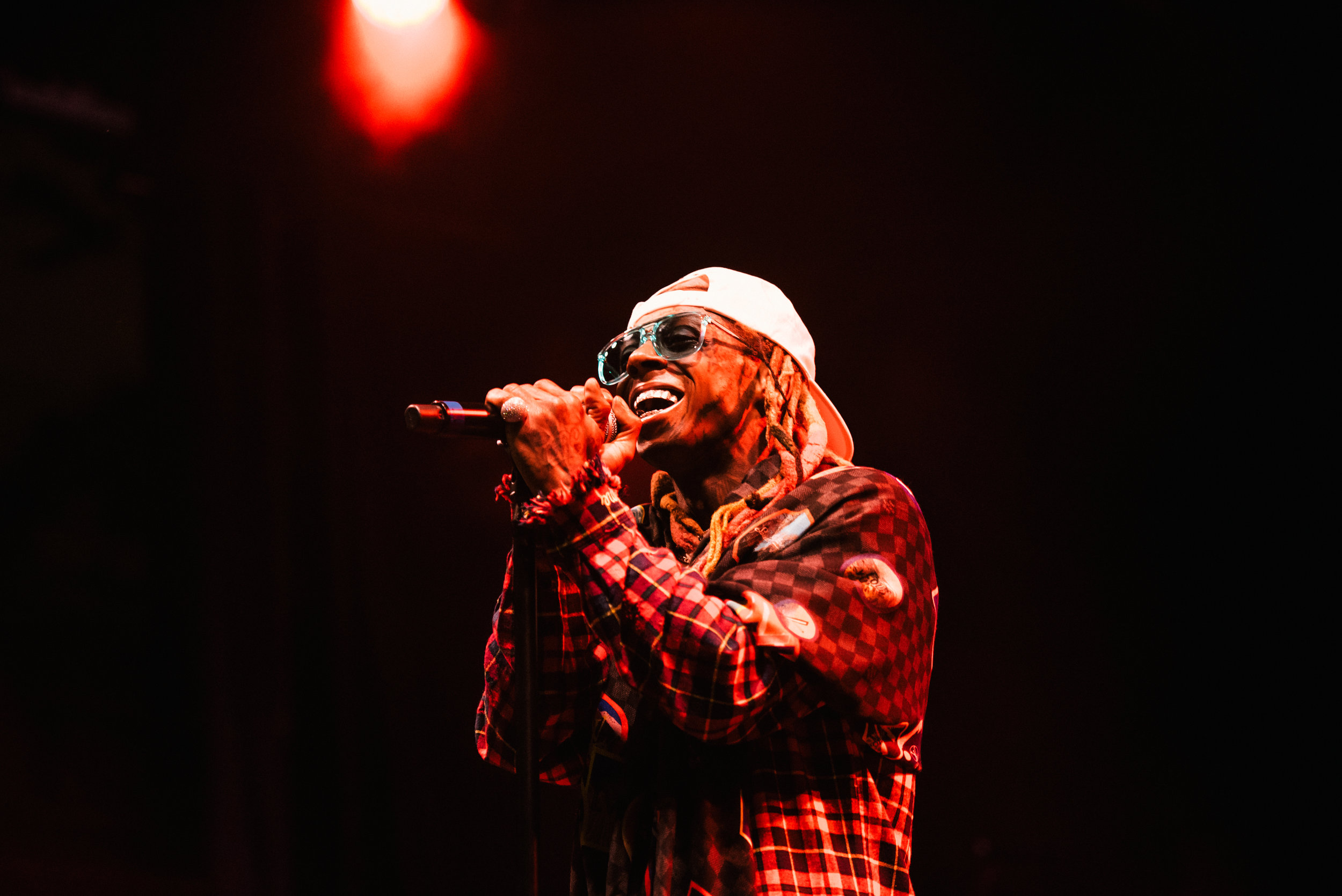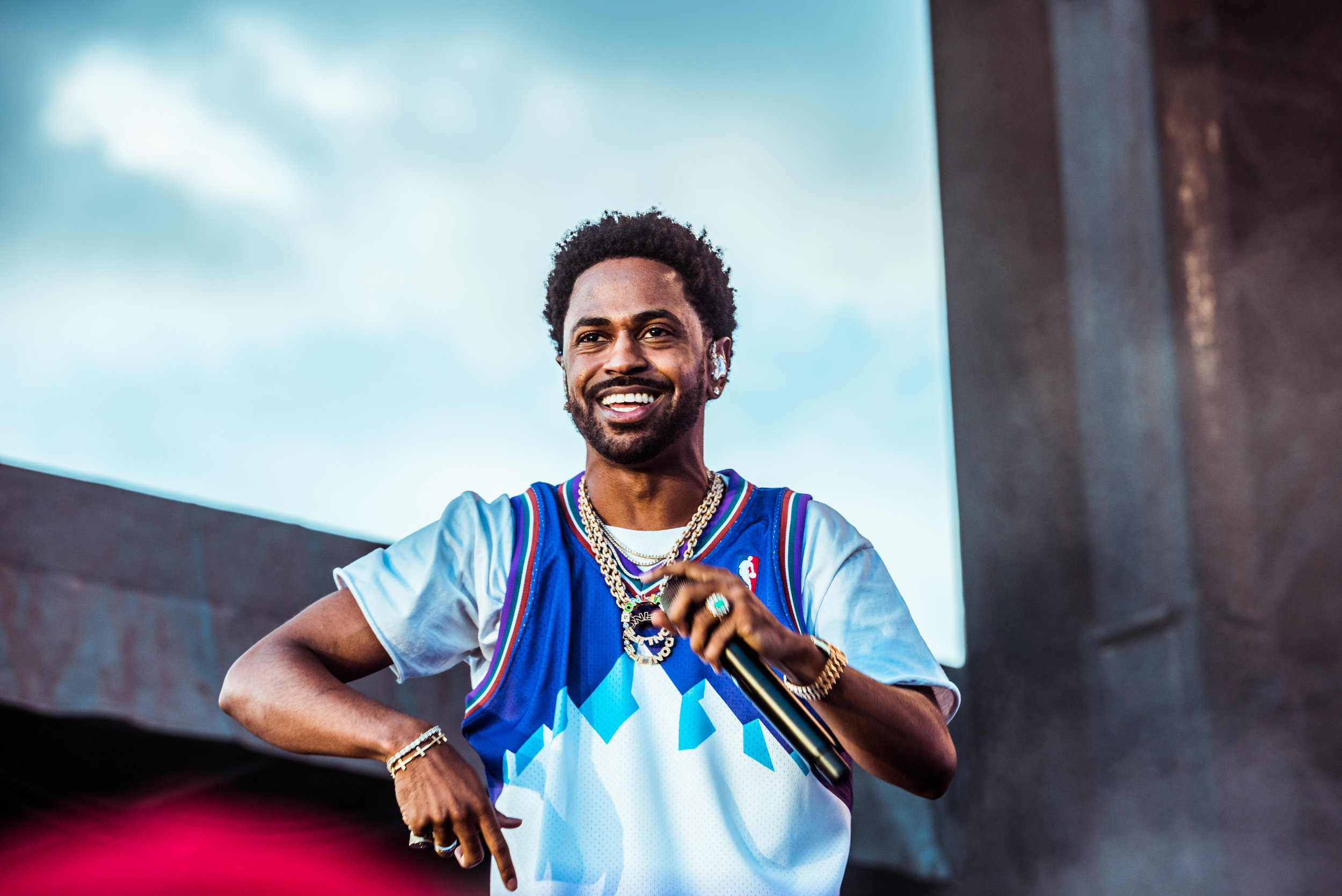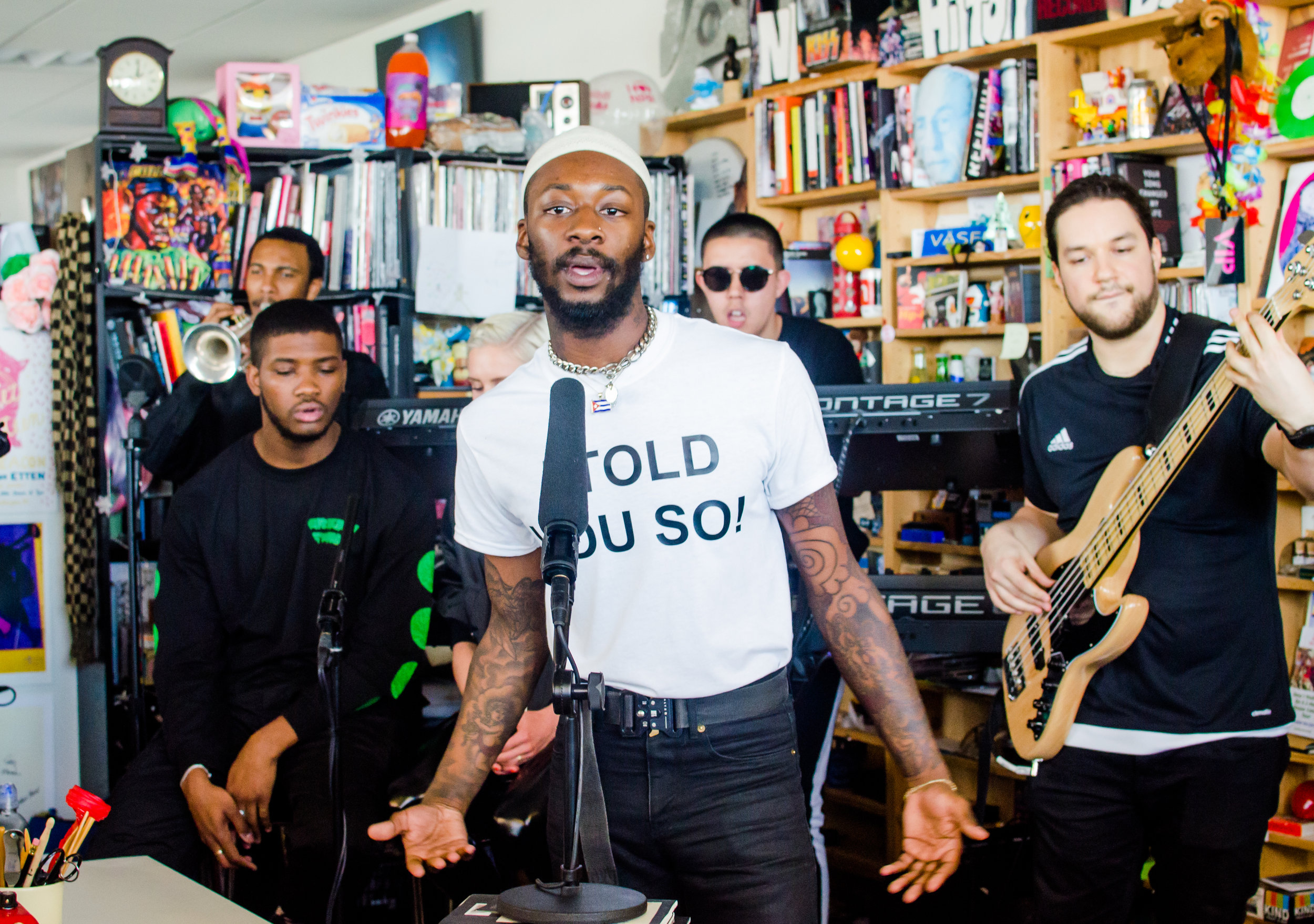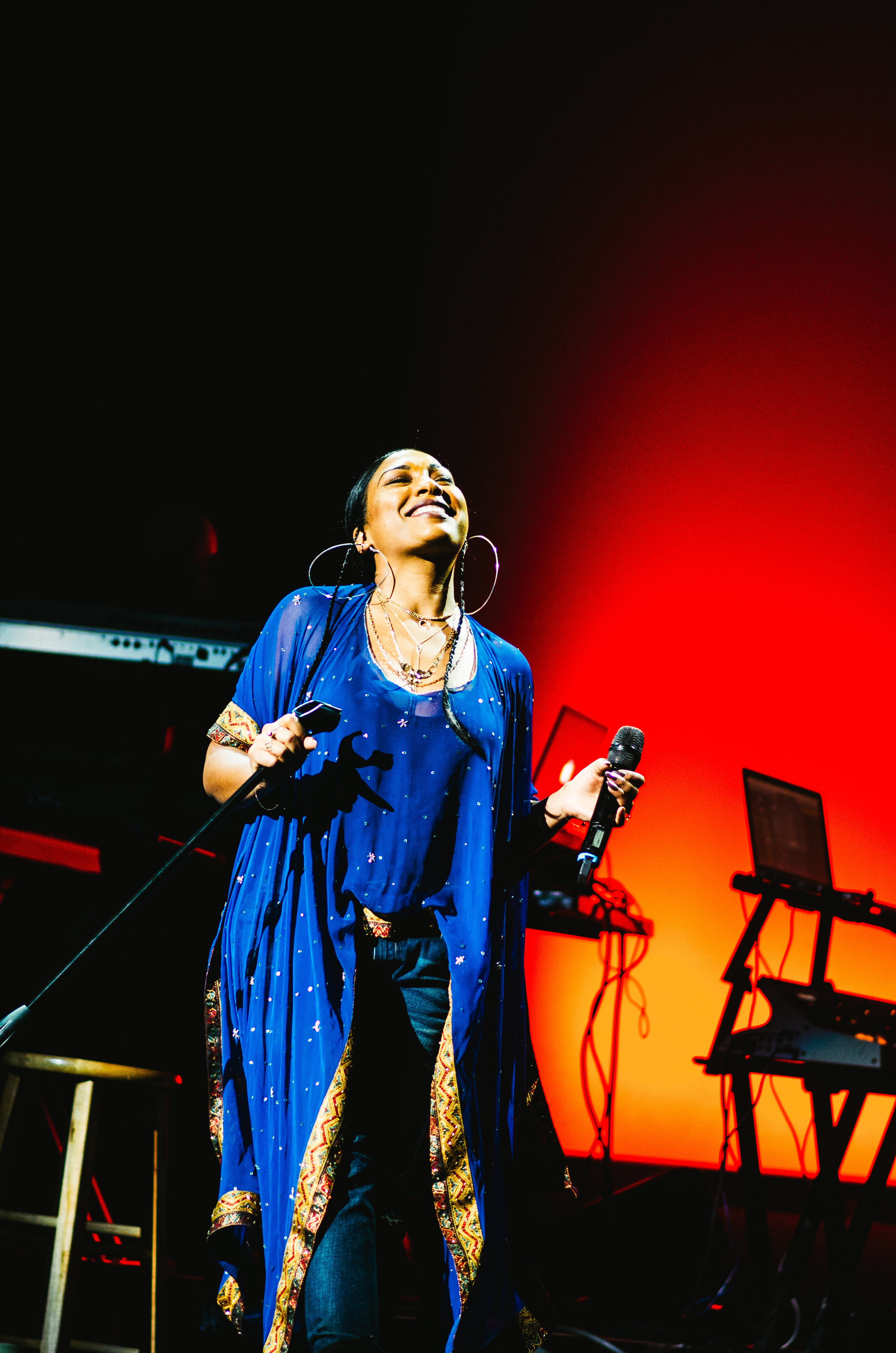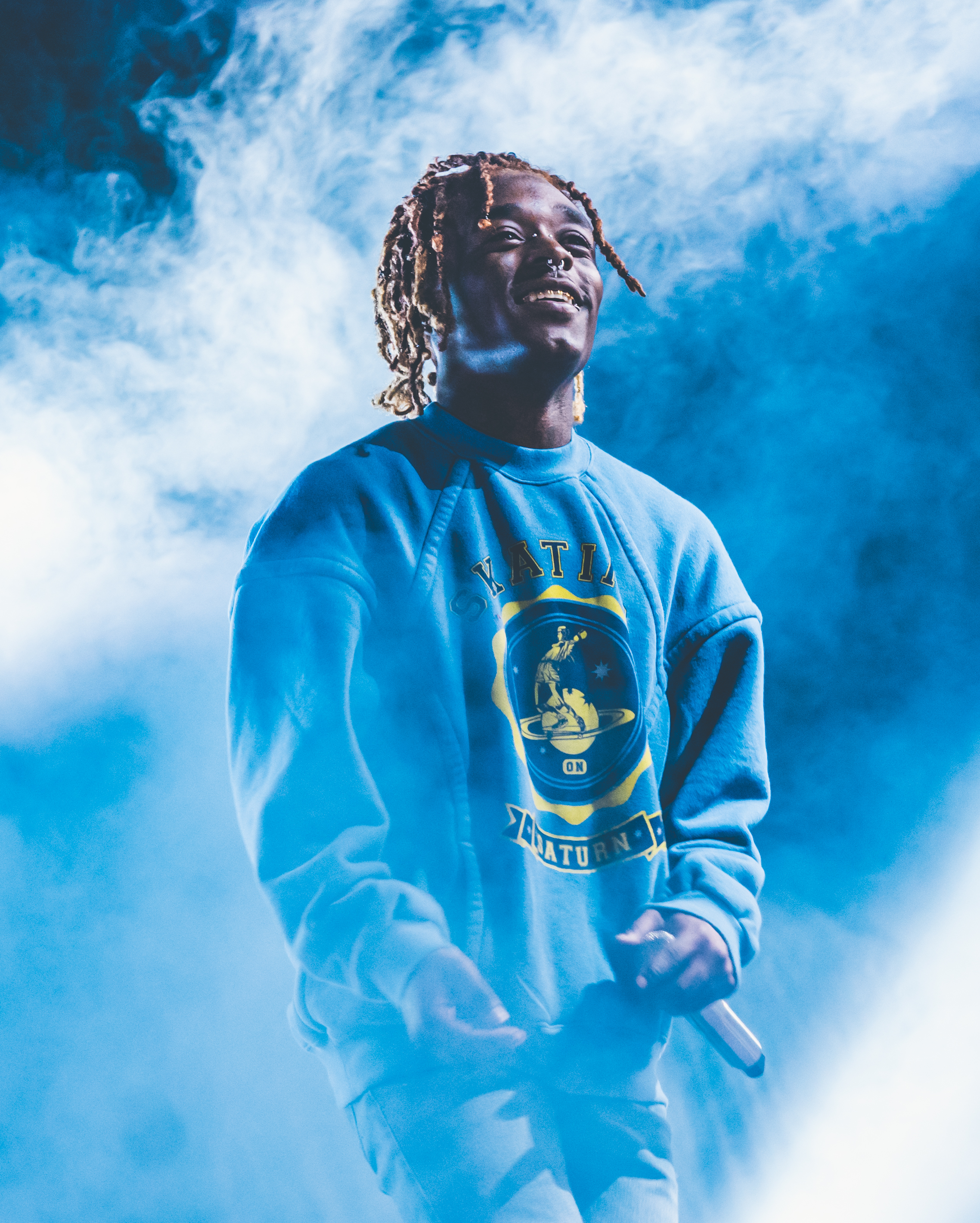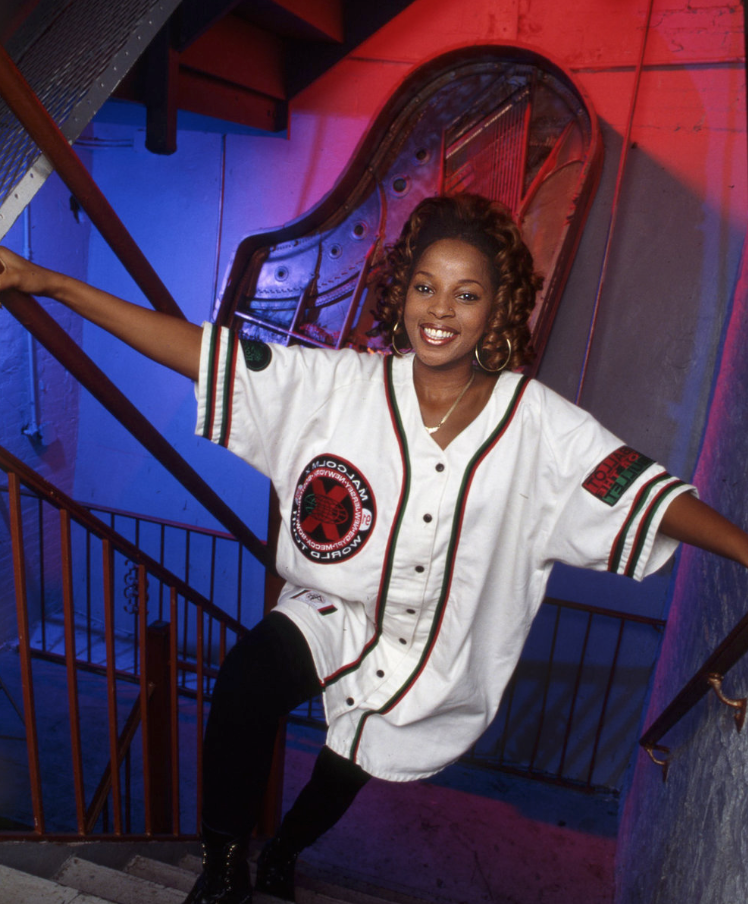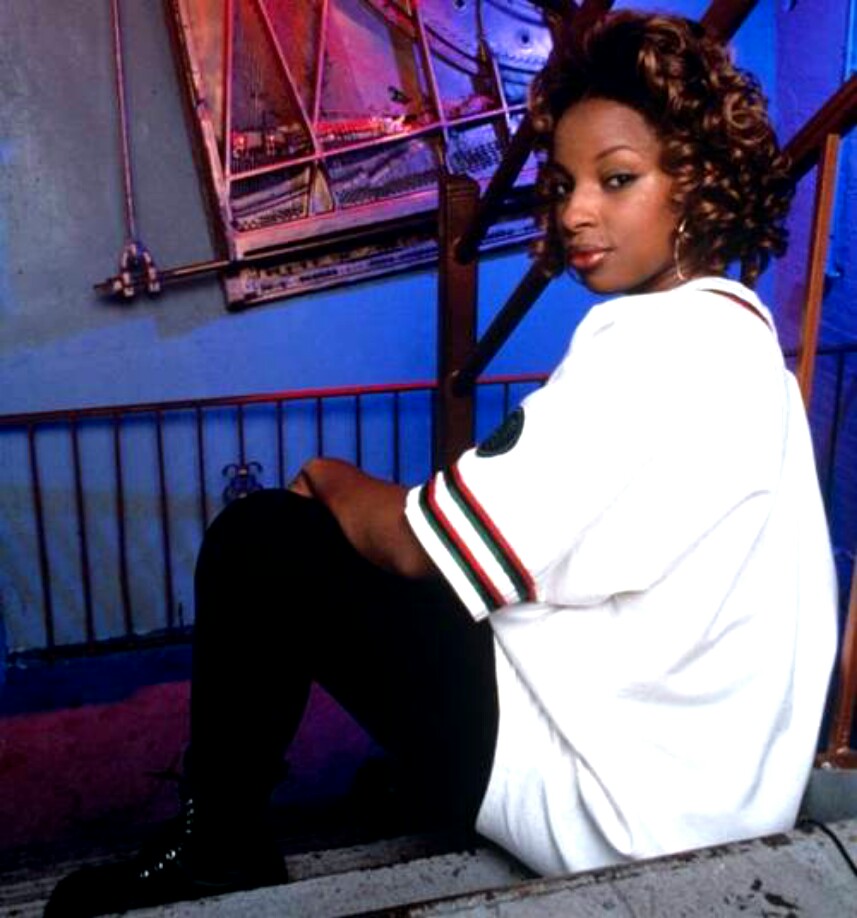By the time Sista released their promotional single “Brand New” in the summer of 1994, the subgenre that is Hip-Hop Soul had already gained popularity. I would be born a few months later, and was therefore too young to witness the rise of artists and groups like Mary J. Blige and Jodeci, whose successful fusion of rhythm and blues/gospel singing over Hip-Hop beats would top the charts. Nonetheless, a quick glance at the Billboard charts or the latest release by one of our favorite artists in the present asserts the impact the convergence of the two parent genres has on our music today. Yet despite its impact as a genre and its influence on modern music, Hip-Hop Soul remains largely understudied. And when you consider how the subgenre functions as a key site for the construction of Black women narratives you know how important Hip-Hop Soul is. How important the album 4 All The Sistas Around Da World is. And why it sucks that it was shelved.
The R&B quartet, which featured a young Missy Elliott, signed with DeVante Swing of Jodeci under the Swing Mob imprint after sneaking backstage at the group's concert and singing for him. After inking the deal the group and Timbaland were all moved into an apartment in Newark, New Jersey where they got to work on their debut album. Their single “Brand New,” which would peak at Number 84 on the Hot R&B/Hip-Hop Singles & Tracks chart, found the ladies singing about a partner that makes them feel exactly what the title says. On it Missy raps “You’re so fly and I’m gonna make you mine…Cuz it’s the sex that I get that makes me in love with you.” The song’s music video, which featured cameos from Ginuwine, Static Major and DeVante, saw Sista dancing and singing on a high-rise rooftop in between shots of Black people hanging out on the streets of their neighborhood. There was no extra fanfare, no gimmicks. Just the group and their music.
This same thesis is present on the album’s cover, which features the women outfitted in baggy pants, a hooded sweatshirt and plaid vests crouching on a porch in front a graffiti-painted wall seemingly playing a game of dice. This Hip-Hop style of dress, present on other iconic 90s acts like Aaliyah, Mary J. Blige and TLC, did not ask the audience to look away nor did it intend to distract them. Their garments instead positioned women as the rightful authority on the relationship between them and clothing, and affirmed that “boundaries” placed between sex, gender and what you wore could be crossed with gratification.
Throughout the album, the women built upon traditions of storytelling when it comes to Black womanhood. In If You Look in My Life: Love, Hip-Hop Soul, and Contemporary African American Womanhood Treva B. Lindsey writes that Hip-Hop Soul women address abandonment, affairs, casual sexual trysts, sisterhood, men, romance, desire, etc. All themes that allow Black women to engage with and interrogate the world around them. On “I Wanna Be With U,” a cut that flips the classic Isley Brothers ballad “Footsteps in the Dark,” the women harmonize about what sex with the person they want would be like. “Out in my Jeep so I props up my two feet/Pull out my sheets so I can keep my seats neat see/Me and you can get it on until we have to break/Slide it in and out like some damn skates,” raps Missy. The lyrics were original, fresh and hypersexual, and fell right in line with the kind of storytelling their soul foremothers used to engage with gender and sexuality.
Then there’s "Sweat You Down," an upbeat and relatable groove about being “in like” with someone but not wanting to sweat them; "Feel of Your Lips," on which the women and a new artist by the name of Mary J. Blige sensuously crooned about their lover; “Sista Mack” which flips the nursery rhyme “Miss Mary Mack” and takes the listener back to their grade school days; and "Good Thang," a smooth track that sampled “Who Can I Run To?” by The Jones Girls before Xscape, with whom the group was rumored to have beef at the time. (On "Hip Hop" Sista sings: “you know you was dead wrong to use that song” and “why you tryna imitate and duplicate,” a supposed dig at Xscape for copying their style and music.
Despite being restricted in their progress as a group, the women of Sista were untethered in their music. They were equally authoritative and prone to feelings of longing and heartbreak. They created songs about pleasurable sexual encounters, men, and sisterhood and built upon traditions of storytelling when it comes to Black womanhood. They were multidimensional just as Black women were, are and will continue to be. Give their debut all of the awards please.
Kalin On Canvas: The Painter Putting Your Favorite Hip-Hop Artists On Display
What is the art community like where you live?
The art dynamic in Charlotte is a lot different than [where I’m from, Wilmington]. I came here to go to school and I ended up staying, because if I would have gone back home I wouldn’t have had the same support art wise. And after I graduated it took me two years to get back into art and get in touch with the art community here.
When you go to art school you either become an art teacher or go the fine art gallery route. They don’t teach you about the connections of a smaller art community. In Charlotte that community is very close-knit.
Was art your major?
Yes. An art major with a concentration in painting. So four years of painting.
Were your parents or your guardians cool with your major? A lot of our guardians, when we want to do anything in art or entertainment that doesn’t have a clear path to money, might not want us to pursue it.
My family is extremely supportive of my decision to go into art. Neither of my parents went to college so they didn’t have an expectation of what I should’ve be [doing there].
My mom has every single thing I’ve drawn since I was five. She came to every single one of shows, she drove three and half hours, even now she makes the same trip. She sends me pictures of myself all the time and I wake up to texts from her about how proud she is of me. I wouldn’t have made it this far had I not had that.
Having your loved ones support your vision is so motivating. Did you always know you were going to share your art with the world this way?
I had been drawing and doodling stuff since I was really little. I always knew art was my thing. In third grade my rooms had dimensions while everyone else’s were flat. I knew something was different.
How would you describe your painting style?
It took me a long time to develop my style. It’s kind of scribbled, because sometimes when I’m working I’m working through something. I used to try really hard to make everything perfect. To make everything look very smooth and very blended and have sharp edges. But life happened to me and I was like okay, this doesn’t have to be perfect. I can show people and it doesn’t have to be “perfect.”
Oftentimes when people are creating they might say that they’re working through stuff. Is painting therapeutic for you?
It’s something that I’ve been doing for so long that it’s become a part of who I am. It’s not something I do to get through something or get past something. And honestly if I’m extremely upset I don’t produce anything. It’s a completely different style, it looks different.
So I don’t paint to work through things, instead I paint to explain stuff. Which is why I can look back at a painting I did at a certain phase in my life and it will make sense.
It looks like it’s making sense, you have thousands of followers on your social media. Do you remember what painting you posted that set it off?
Yes! It was about eight months ago when I painted Lil’ Kim. I had painted Chance the Rapper and Cardi B before that, and I wasn’t getting the response I expected. So I decided to paint Lil Kim, and I finished it in one night. It was the one I thought I should’ve done in the beginning.
When I posted it a few days later it attracted hundreds of people. But I realized people really supported my work with the OutKast painting. That one got posted on The ShadeRoom and my followers went up to 2,000 and then more overnight.
Walk me through your process when you’re creating a piece.
The first step is starting, because I’ll think about a painting I want to do for days. And I have to be happy, I can’t be upset. But I’ll try to find pictures that have different perspectives, then I’ll draw it on a canvas and paint. Depending on my mood I could finish it one night or it could take me a month.
A lot of the paintings on your site and your social media are of these prominent Black, Hip-Hop figures. Why do you choose to paint these people?
It takes me back to my childhood. I remember Saturday morning when my mom woke me up to clean and music was playing. Aaliyah, Diddy - they remind me of my childhood, of a time when I was really happy, of me.
And being African-American, we all relate on a similar level when it comes to music. We all have the same vibe when we think of our childhood.
What advice would you give to a young artist?
Follow your dreams. If you don’t have the opportunity to go to art school, reach out to people. Artists I looked up to and would reach out to on Instagram would never respond to me, and now they follow me. Even if people don’t respond you have to keep pushing.
Also, say yes to everything. Don’t say yes forever and don’t say yes for free. Don’t say no when you don’t have any other options. In the beginning when I was being lazy I would look for every reason to say no, until one day saying yes repeatedly put me in a higher place.
And be your own cheerleader. You can blow up. It can be you.
Chynna Keys Is The Photographer You Need To Know
Chynna’s name popped up on my timeline a few weeks ago. Her photos at D’Usse Palooza were getting a ton of retweets, and she was getting a bunch of shout outs from what seemed like hundreds of people on Twitter. It was one of my favorite things to see: the amplification of Black women and their work. She’s shot what seems like everyone, from Solange to Big Sean to Uzi to Goldlink. Just as amazing was the fact that she had been invited to shoot D’Usse Palooza alongside Ravie B, a seasoned photographer who has not only captured shots of some of the biggest names in rap like Future, Drake and Kanye, but even shot the tour of the goats themselves: Beyoncé and JAY-Z. Chynna didn’t decide to put her all into photography until two years ago. Talk about a come up.
We caught up with Chynna to talk about her introduction to photography, what actually makes a good photo and her dream people to capture.
What is the culture like in PG County and how does it influence your photography?
It’s a mix of a bunch of people that come from a bunch of different ways of life. But the best part about it to me is that a lot of them are Black. You just see a lot of Black excellence.
When did you get into photography?
In high school-2010 is when I took my first photography class…I didn’t do too much with it camera-wise until 2014. Most of college I was just taking pictures on my phone because I had gone to an art exhibit and there was a woman who only took her pictures on her phone. And I thought “wow this is so cool I can do this too,” and I was doing it for a couple of years. Then I had a friend who was a photographer who told me to get a camera.
I shot my first festival in 2015 and I didn’t know what I was doing. I shot another one that year and I still didn’t know what I was doing. I say 2016 was the year when I decided to figure out how to actually do this. That was the year I decided to take [photography] seriously.
What makes a good photo?
Any photo that captures a moment and makes someone feel is a good photo. There is a technical side of photography that I definitely think about when I’m shooting, like the rule of thirds or composition. But taking pictures that make people feel something is not something everyone can do. People can take pictures of artists and take pictures at concerts, but if it doesn’t make you feel something that person hasn’t done their job.
Whether it’s the crowd wilding out or the artist throwing water at the crowd, music photographers somehow manage to always get shots that seem so difficult. How is music photography different from any other kind?
You don’t have the amount of time with music photography that you might have with other photography. You also don’t have control of [your client]. They’re not here for you, they’re here for the crowd. What they do you have to react off of. If they run somewhere or if you know they’re going to throw a water bottle into the crowd - there are a lot of things you have to pay attention to in a short amount of time.
Are you ever nervous when you’re shooting a show?
Sometimes yes, sometimes no. A lot of the time I’m so focused on getting what I need to get that I don’t have time to be nervous.
When I went to Miami to shoot Rolling Loud I was nervous because of the actual experience. But when it comes to those moments, when you just have to go, you have to put your game face on.
There has been this boom in people who think they can grab a camera and go shoot something and call themselves a photographer. How does that make you feel?
I have mixed feelings about it. I’m always here for people prospering. But a lot of times with this music stuff people will grab a camera so they can be up front at shows. It can get frustrating when there are people that want to do it just for clout. If it’s genuine it’s going to pop for you. If it’s not, it’s not.
There are a lot of people that aren’t genuine, aren’t nice, aren’t reaching out to share their gifts with others. Something I found amazing was that you shot D’Usse Palooza with Ravie B. How did that connection come together?
Twitter! That was a crazy day. My friend Nick mentioned me under a tweet where she was looking for a photographer in DC for the event. And I threw some pictures in thread. That’s when she reached out to me.
I read an article about her in 2016 that talked about her quitting her job and shooting around a whole bunch. Reading that was so inspirational to me, because I still currently have a 9-5. And seeing her go from that to shooting Future to shooting a bunch of concerts to then going on tour with Beyoncé and JAY-Z-it was really amazing that she wanted me to help her shoot the event. She also talked to me about helping other Black women photographers and helping them win. Just a genuine personality that I love, because there’s room for everybody.
Your photos are amazing and you’ve made some really great connections so far, where do you see yourself five years from now?
I want to keep doing what I’m doing. This year I shot more festivals than I ever thought I would in life. I feel like I’m on a ride and I’m just going to keep going.
Then, I have a house. I have a mortgage. So I can’t up and quit my job and just leave.
You have a whole mortgage.
A whole mortgage! So there are pieces of my life that I would have to figure out before I do anything drastic. But if I could go on tour for a month, that would be cool. And the DMV is on a crazy come up so working with artists here. I would also like to give back here, as far as teaching kids how to shoot.
In five years? I definitely want to have gone on tour, shot for a couple of brands and have been an in-house photographer for a couple of festivals.
How important is music to you? How important is Hip-Hop to you?
Hip-Hop is amazing and music in general has been my saving grace. I’ve fallen in love with the art of storytelling, not just the song but how Hip-Hop can do that.
Who is your dream person to photograph?
At Rolling Loud I took pictures of J. Cole but it was a struggle. I had to climb through the crowd during a Lil Uzi set just to make it to the front for [J. Cole]. I would like a do-over. I’ve been to a lot of his shows and I would love to get in the pit and really shoot him. Also JAY-Z. Like wow I actually shot a whole legend.
And if Kanye ever stops being crazy I would love to shoot him.
KayCee Shakur On Growing Up In Chicago, Creating Hip-Hop Soul And Navigating Depression
by Nadirah Simmons
KayCee Shakur and I are miles away from each other-795 to be exact. Yet despite being separated by four states and this phone call being our first time ever speaking to each other, the conversation felt as close as ever. From trying to figure out what cheese tastes like on a bag of Hot Cheetos to promising to take her out to the best spots in New York City if we can go to Harold’s when I finally visit Illinois, it feels like we have been best friends for years. But through all of the conversation I was most excited to share with her how much I loved the video for “Yemoja,” a track off of her debut project Divination that pays homage to the streets of her hometown of Chicago and references one of our favorite movies, Crooklyn.
For so many Black girls and women the film is a favorite because of the lead character: nine-year-old Troy. While most movies by Spike Lee and other filmmakers alike center the male gaze, this film positions the life, motivations and perspectives of its Black women characters at the forefront. KayCee does the same in her music, as have many other Hip-Hop Soul artists before her.
The genre’s emergence created a new space for Black women to tell their stories and engage with the world around them. And with the exception of the intro and outro tracks, each song on Divination is named after an Orisha on which KayCee waxes poetic about similar themes of life, love and survival through the lens of Black womanhood.
In honor of this month’s theme we spoke to the artist about growing up in Chicago, the dangerous extolling of Black women’s “strength,” creating music in the digital age and more.
Are you originally from Chicago?
Born and raised in Chicago. East side of Chicago my whole life. Lived in the same house my whole life.
That’s awesome. How did this environment influence you being an artist?
Chicago is such a musical city and it's weird that we don't really have a music scene that's global and worldwide because I've always been able to just go to the train and see people performing. Or literally in the middle of our street we have bucket boys that bang on buckets. My city is filled with music. And my grandmother and my grandfather who raised me are Southern Baptist so all I heard all day was singing. Not to mention I went to schools that had really great music programs that kept music a part of who I was.
Who are some of your biggest inspirations musically?
Jill Scott. I love her. Outkast. Just melodic Hip-Hop sounds. And people don't even really think Hip-Hop when they think Jill Scott, but it's like you've got to think again because sis be spitting! Her flows and staccatos are so dope. Her poetic lyrics. That's the kind of sound I really try to incorporate into my music.
And that sound is Hip-Hop Soul.
Definitely!
What made you decide to share your vision of the world with other people this way?
I was just talking to my friends about being 5 years old and getting my favorite Christmas gift ever: a VHS of The Temptations movie. I also got a purple turquoise and yellow microphone, and that entire year I did nothing but watch the movie over and over and pretend that I was a part of The Temptations. I would always get the solos in and grammar school and high school, that was just what I did. Everybody knew if there was a solo it was going to be mine.
But as far as sharing the art with the world, it honestly did not start until six months ago. An old friend of mine encouraged me, they were like “you’re so depressed because you're not doing what you’re supposed to be doing. You're supposed to be creating.” And just getting those words of advice from him really got me off my ass. They said make this happen for yourself. Do this. And that was only six months ago when I decided I'm going to make a project and I'm going to put it out.
What was that process like?
I wrote most of Divination in my mom's living room. I was working a job I hated and I got fired on purpose so that I could collect unemployment for a little while. I wanted to take that time and collect my little $400 every two weeks to create my project. Turns out that being broke as hell like that will cause major depression. I went through a major depression. And my sister was going through things and I had to take my niece for a little while.
But I had it in my mind that I wanted to drop this project on 4/20, and I went into overdrive the last two weeks [before the date]. I was writing down everything that I was feeling. Everything that I was thinking. Revisiting songs that I started when I first got the drive to get back into music. All of that fueled me out of a depression and my unemployment ended literally three weeks before my project dropped. I borrowed $126 from my mom to get my project mixed and mastered and I just put it out. I started my new job a week after the project dropped. Everything came full circle.
To have things come full circle while battling depression is a great feeling, and I love that we’re having more conversations about it within our community, especially since Black women are expected to be strong and have it all together.
We are like trained robots when it comes to pushing through pain. We will be going through the absolute worst and most trying times of our lives-still waking up everyday, getting to work on time, still taking care of our kids and fucking cry ourselves to sleep every night. Can’t get any sleep at night because of all of these things weighing on us. And that's honestly the worst, depression and suppression at the same time…Self care becoming a thing just now in 2018 is crazy! But I’m glad we are having these conversations about taking care of ourselves and focusing on ourselves.
So am I! And a lot of people are turning to art and music to create and consume these discussions, sometimes I feel like everyone is creating something. How do you feel about the increasing number of artists on and offline? How do you remain unique?
I actually don't mind everyone creating now. I think that it just proves that we're creative people in general and that we should focus more on creativity. But in the same sense the market is very oversaturated. And when you are trying to create your own sound it is really hard because you’re wondering whether or not people are going to mess with it amongst everything that's going on. Focus on your sound and your audience will come.
That is so true, but we’re in a space now where it’s a bit harder to reach certain places in music if you aren’t utilizing the Internet or social media in some type of way.
I feel like it's like 80% brand and 20% art these days. And when you focus so much on branding you miss out on a lot of good art. Back in the day you needed about two hundred thousand or a bill[ion] to create a brand for somebody. Today you can create a free Instagram page and create a brand for yourself.
We have all witnessed artist that should not be getting record deals, but they have a presence on the Internet, they go viral and they get record deals…Me as an artist I always have to make sure that I'm focused on the art just as much as I focus on the brand. In 20 years the people who have art are the ones that are going to still be talked about. Everyone is going to have a social media presence by then.
On Divination you’ve focused on the art. You’re using Orishas to talk about themes that so many people relate to-love, heartbreak, strength. The song “Oshun” gets real deep. Does it make you nervous to put certain songs out there, either because they could be about someone or because they’re so personal?
Well “Oshun” isn't about anyone in particular, but honestly that's who I am as a person. I was really telling the story of the Orisha in that song and making that story real for girls in 2018 because that it’s so prevalent right out. There are so many women going through that exact story. So that's the story that has to be told in a way that we could relate to it and understand it.
All of the songs on the project are telling the story of the Orishas. But I rewrote the songs four, five, six, seven times because I had to make sure that I was saying this in a way that we could relate, we could grasp and we could understand. I didn't even want you to feel like I was telling you something about somebody. I want you to hear the song and say “yeah this is this is my life,” because the stories really are intertwined with who we are as women.
I know you have another project coming out on the 30th, what else do you have lined up for the rest of the year?
The project is going to accompany something really special. I can't wait to announce it. But for the rest of the year I’m just focused on performing and getting into meetings to make some real things happen.
What inspires you to keep going?
I really want people to know that it's okay to not be okay, and when you're not okay you have to address it. I feel like sometimes with art, especially in the Black community we treat our misery as an accolade. Yes the hardships absolutely make us who we are but we cannot ignore them. We have to deal with it and get to the bottom of our pain and that's what I'm going to continue to make art about.
And I want to talk about where I’m from. About living in the hood, and that even though we live there we still have color and culture and life. It’s not all scary.
Where do you see yourself five years from now?
I don't really put too much high regard in awards and stuff because I don't even want to even put that in my mind and have myself trying to alter my art to fit in. And if that brings an award that's amazing and I'm grateful for that. But as far as the five years I see myself still creating and being happy with my art. That's all I can ask for.
Breaking Down 10 of Our Favorite Mary J. Blige Tracks
by Brooklyn White
Discovered in the late 1980s while singing Anita Baker’s “Caught Up in the Rapture”, it’s fitting that heavy, stunning melismas and passionate belts are a part of Mary J. Blige’s set. Her ability to convey the lowest lows of love and her jazz-like live improvisations are reminiscent of Billie Holiday, but Blige will forever be unique.
Before Faith Evans, Mariah Carey, and Ariana Grande, Blige mastered the art of mixing gospel-inspired vocals with uptempo cuts, often with the help of notable MC’s. Her 1992 formal introduction (as she had been working as a background vocalist for years), What’s The 411?, was sample-heavy, street certified, and full of sweet hooks - aspects that are now a staple in Hip Hop/R&B. The “Queen of Hip-Hop Soul” honed her signature sound over the course of her 25+ year career, giving us some of the most jammable, memorable songs in history. In honor of her legacy, here are our picks for her 10 Hip-Hop Soul tracks, with commentary by Brooklyn White.
“You’re All I Need” Remix
Technically this is a Method Man song, but there’s no denying that it would not be the same without Mary J. The incorporation of Mary on the heavy-handed sampling of Marvin Gaye and Tammi Terrell’s 60’s song of the same name made women gravitate towards the track, a crucial key to its success and Grammy win. In a talk with Complex, Method said, “I felt that song was putting me in that light. What I didn’t realize was, niggas was respecting that song as well as chicks was.”
“Real Love”
Sporting her baseball jersey and combat boots, Mary showed herself as a regular girl from New York. Rocking round-the-way girl gear, a lot of Black women were able to see themselves in Mary. These same women were also into Hip-Hop and got their fill with the beat which took the drums from Audio Two’s “Top Billin’.”
“Love is All We Need” Remix ft Foxy Brown
Brooklyn’s Fox Boogie laid down some sexy smooth adlibs and a verse of course over this Diana Ross interpolation. As Brown says in the intro, the sounds were handled by the Trackmasters.
“Family Affair”
Dr. Dre produced this anti-holleration anthem. Those keyboard chords scream early 2000’s Dre. As the top commenter put it, “This is real Hip Hop”. Fosho.
“Reminisce” Remix ft C.L. Smooth
This is my absolute favorite Mary J. song. The original was more of a New Jack Swing ballad, but this version was produced by Dave Hall and Puff Daddy (yes, I said Puff Daddy) and had some flavor the prior one didn’t. Instead of a bridge, it featured input from C.L. Smooth, who was still getting a lot of spins for his ode to lost souls, “They Reminisce Over You.”
“All That I Got Is You” with Ghostface Killa
Taking a cue from fellow Wu Tang member Method Man, Ghostface enlisted the Queen of Hip Hop Soul for his debut solo single. For the grand occasion, RZA served up one of his world class beats, which takes its somber sound from “Maybe Tomorrow” by The Jackson 5. Mary sings the chorus that details the struggle of growing up with minimal resources and a single mother. This “child born in and of pain” set up is a long time theme in rap, with an early example including “The Message”.
“I Can Love You” ft. Lil’ Kim
Kim and Mary have been soul sisters for decades-Mary was photographed holding the Queen Bee down during Biggie’s funeral and 1997 and they were cheesing side by side in a M.A.C campaign. “I Can Love You” is a physical cementation of their alliance, taking its winding piano from Kim’s “Queen Bitch” and is all about being a better lover than another woman.
“Love Yourself” Remix ft A$AP Rocky
Digesting the truth, getting over obstacles and loving yourself no matter what is the theme of this track. Rocky replaced Kanye West in the video version, but they kept the trappy-horn laden backing. Blige rode the beat with ease.
“What’s the 411?” ft Grand Puba
“Yeah nigga, what makes you different than the next nigga? Seen you last week and you couldn’t even speak.” This introduced us to Blige’s rapping, a side that we would see on other songs like Busta Rhymes’ “Touch It” all-star cast remix. Here she and Grand Puba share their thoughts on gender relations, and she finishes her verse off with a cover of “Very Special” by Debra Lewis.
“Glow Up” ft Quavo, DJ Khaled, and Missy Elliott
I still think that this song was largely underdiscussed! Mary, Missy and a Migos all on one track? When will we ever hear that again? This cut from Blige’s latest offering ‘Strength of a Woman’ is all about leaving a loser behind.
The Legacy of the Diddly Diddly D
by Kianna Alexander
Born in Jamaica but raised in the Moneyearnin’ Mount Vernon, we first heard Heavy D’s voice in 1987, when he and the Boyz (DJ Eddie F, G-Whiz, and the late Trouble T-Roy) released their debut album Livin’ Large. He came strong right out of the gate with tracks like “The Overweight Lover’s in the House” and “Mr. Big Stuff,” embracing his size and wearing it as a badge of honor. On “Don’t You Know,” with a little help from R&B crooner Al. B. Sure, he professed his love for a woman and waxed sentimental by imagining what their wedding day would be like.
“Got Me Waiting,” “Somebody for Me” and “Now That We Found Love” looked at relationships in a more pensive, thoughtful way. Love is not cut and dry, and Hev knew that. And anyone who’s heard “Black Coffee” knows it is a manifesto of sorts, on which he uplifts and edifies Black women during a time when most rappers were busy calling women distasteful names.
Even at times when Hev used two of the most common practices in hip-hop: sampling or collaborations, he did it a way only he could. The super sexy “Keep It Comin’,” one of his underappreciated tracks from 1997’s Waterbed Hev, is a prime example of sampling done right, as Hev lays down game over the Gap Band’s classic track “Yearning for Your Love.” And if you want to hear a hip-hop supergroup, before that was really a thing, “On Point,” featuring the late Big Pun and Eightball, is a must listen. That track goes hard, y’all.
From being one of the only men in Hip-Hop to embrace their larger size and stray from hypermasculinity in his music, Hev’s impact in Hip-Hop is apparent. Yet beyond giving us some of the best Hip-Hop to bless our ears, he also had a hand in the careers of some of our most beloved Hip-Hop Soul artists.
In the early nineties, he made the call to Uptown head Andre Harrell that secured an internship for Sean “Diddy” Combs. Combs would go on to produce the debut album of the “Queen of Hip-Hop Soul” Mary J. Blige. It was also Heavy who heard a demo by a group of four young guys from North Carolina and introduced them to Harrell. That group was Jodeci, who would go on to fuse Gospel, New Jack Swing and Hip-Hop Soul in their music.
Additionally, he would work with Soul for Real, Monifah, Guy, LeVert and Changing Faces. Hev is also credited as a guest artist, producer, and composer for industry giants and pioneers like Queen Latifah and the King of Pop himself, Michael Jackson.
“We’ve Got Our Own Thang” contains one of my favorite Heavy D lines:
In this life, I strive for improvement/Be your own guide, follow your own movement.
Hev succinctly encapsulated what he was all about. Whether he was working on his own music, or collaborating with another artist, he was all about individuality and being true to himself. With his words, he encouraged us to do the same. Rest in peace, Hev. There will never be another.
Kianna Alexander is the author of more than 35 published romances as well as a serious music lover. When she's not writing, she can be found with her husband and two kids, being domestic, to the sounds of Miguel, Ro James, or classic hip hop. Find her online at www.AuthorKiannaAlexader.com.
What's the 411?: Hip-Hop Soul, Mary J. Blige and Black Women's Narratives
by Nadirah Simmons
In 1988, Mary J. Blige recorded an offhand cover of Anita Baker's "Caught Up in the Rapture" at a recording booth in a lmall. The cassette made its way to Jeff Redd, a recording artist and A&R runner for Uptown Records. Redd sent it to Andre Harrell, and after meeting with the singer signed her to the label in 1989. Fast forward to 1992, when Blige released her debut album What’s the 411? According to Entertainment Weekly's Dave DiMartino, the record's commercial success was attributed to Blige's "powerful, soulful voice and Hip-Hop attitude.” It was unlike anything done before. It was Hip-Hop Soul.
Blige was hailed as the queen of this new genre, creating a space for her alongside legends like Aretha Franklin, the “Queen of Soul.” Without a doubt the honor bestowed upon the young songstress was more than a moniker. While New Jack Swing fused Hip-Hop elements with R&B music, Hip-Hop Soul elevated the synthesis. Now, soul singers were singing directly over the types of sample-heavy cuts heard on Hip-Hop songs. Mary J. Blige carved out her own space as both an innovator of the genre and a designer of a new way to present narratives about Black womanhood.
The title of What's the 411? came from Blige's past occupation as a 411 operator, used to indicate that she was the "real deal.” The music was as well. R&B singers at the time covered themes of pain, suffering, relationship troubles and happiness, while the Hip-Hop artists wrote about violence, crime, poverty, oppression, happiness, etc. That’s not to say that all songs did this-anyone who is a fan of Hip-Hop and R&B and moreover music as a whole knows that no one genre is a monolith. There were various types of subject matter in both genres-particularly in Hip-Hop because of the experimental time was the Golden Age. But it was Blige’s influence by both genres that amplified revelatory themes that were trademarks of blueswomen like ‘Ma Rainey’ and Bessie Smith-abandonment, betrayal, physical and emotional abuse, romance, etc. The singer dubbed the ”tough girl persona and streetwise lyrics" by music critic Tom Moon drew upon her experiences as a Hip-Hop generation woman to deliver a dynamic form of storytelling. Rolling Stone noted that Blige’s songs provided “a gritty undertone and a realism missing from much of the devotional love songs ruling the charts at that time.” Mary didn’t just sing about her pain or happiness, she gave listeners an in-depth narrative on how and why she arrived at those emotions in the first place.
As Treva B. Lindsey notes, “Hip-Hop Soul artists challenge the invisibility of multidimensional African American womanhood within popular culture, and become conduits through which Black women of the Hip-Hop generation express personal aspirations, intimacy, and love.” The woman who started off sporting baseball caps and baggy clothes while singing over hard hitting drums and a piano is more than just an artist. She is a channel through which we explore. She is a channel through which we understand. She is a channel through which we heal. She is the Queen of Hip-Hop Soul.
Sources:
Lindsey, Treva B. “If You Look in My Life: Love, Hip-Hop Soul, and Contemporary African American Womanhood.” African American Review, vol. 46, no. 1, 2013, pp. 87–99. JSTOR, JSTOR, www.jstor.org/stable/23783603.
Moon, Tom (2004). "Mary J. Blige". In Brackett, Nathan; Hoard, Christian. The Rolling Stone Album Guide. Simon and Schuster. pp. 83–4. ISBN 0743201698.
Herstory: Thank Young M.A.
by Takia Gordon
Imagine coming out as a lesbian between the year of 2008-2010 and trying to be accepted. Despite Lil Wayne and Gucci consistently dropping mixtapes and being introduced to a woman rapper-Nicki Minaj-who spoke about kissing women in some of her songs, I realized there were not enough openly lesbian rappers who rapped about being with a woman - if there were any at all.
Men referencing girls kissing girls in their music was popular, but it did not shed a light on masculine lesbians. And as a masculine lesbian myself, the references were not for me. Instead they were for the femmes kissing femmes and the girl who will kiss another girl for a little attention.
In 2016 as I scrolled through YouTube at work, I came across an artist I’d never heard before. One of her lyrics stood out: “You call her Stephanie, I call her Head...phanie.” I replayed that verse. Then I replayed the song. It was too hot. I immediately began searching for other tracks by the artist known as Young M.A. From the single “Ooouu” to “Karma Krys” back to her debut album ‘Herstory,’ Young M.A. was an artist who was finally speaking from the perspective that I always wanted.
Her recent offering “Petty Wap” reinforces that she is not going to let up on who she is because she has made it this far. She's going to continue to speak and tell a story for those of us who are still misunderstood. She will continue to open doors for those of us who once did not feel accepted enough to talk about who we choose to love.
In the year 2018, after 10 long years I have seen an evolution in a community I can proudly say that I am a part of. I’ve learned so much about who I am and what I stand for and will always believe in myself because of it. I’ve seen more and more of the LGBTQ community in Hip-Hop breaking barriers and allowing their stories to be heard. Young M.A.’s music has and will continue to inspire me to chase my dreams no matter what circumstances I may face.



